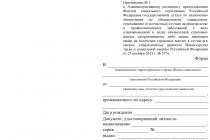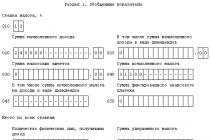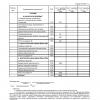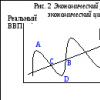A bank card is an electronic settlement document of the established form, made in plastic, with the help of which the cardholder or a person authorized by him instructs the bank - card issuer to transfer, credit and withdraw funds from the corresponding account.
The use of bank cards in non-cash payments allows you to achieve certain benefits and conveniences at the state level, bank card holders, credit organizations, trading organizations.
The public benefits include:
1. Reducing the cash flow and, accordingly, the costs of its maintenance, as well as the "nutrient environment" for theft, offenses, tax evasion,
2. Reduction in the number of employed persons in the field of cash circulation and their release for productive labor,
3. Accelerating the turnover of funds in the national economy,
4. Reducing the amount of non-payments on the obligations of all economic entities,
5. Reducing the workflow, especially on paper,
6. In connection with the acceleration of the turnover of funds, their mass is reduced, which is necessary for mediating the turnover of goods, which is especially important in conditions of inflation, when the real money supply is reduced.
For cardholders, their use provides the following advantages compared to cash payments:
1. The risk of losing money is reduced,
2. The risk of traditional forms of theft is eliminated,
3. It is possible to receive income in the amount of a set percentage from the balance of funds on the card account,
4. Benefits (discounts) are possible when purchasing goods and services,
5. It is possible to reduce costs when performing financial transactions (currency conversion, transfer of funds),
6. The ability to quickly pay for the purchase without having cash,
7. Kudos,
8. Some cardholders may receive benefits such as exchanging purchased items, booking hotel rooms, purchasing airline tickets, etc.
However, card payments are not without some disadvantages:
1. Services of banks for issuing and servicing cards are paid,
2. Bank cards are not accepted in all stores and service companies,
3. Timeliness of payments and safety of funds on card accounts depends on the liquidity of the bank.
For credit institutions, the issue of bank cards leads to positive results:
1. The resource base of banks is expanding due to the growth of balances on card accounts,
2. A new source of income appears in the form of fees for servicing the cardholder (the cost of the card, transfer of funds, cashing out, conversion, etc.),
3. The issuance of consumer loans when issuing credit cards and, accordingly, the income from credit operations increases,
4. Increasing the competitiveness of the bank in the banking services market in the region,
5. When issuing international bank cards, the international rating of the bank grows.
At the same time, the issuance of bank cards requires large expenses from the bank, which, in the absence of a culture of using bank cards, an underdeveloped infrastructure, makes bank investments risky. The risks associated with the theft of cards, fake cards can also be significant.
The use of bank cards by trade and services can bring positive results in the form of:
1. Expansion of trade by attracting new customers who prefer to pay by cards,
2. Reducing the cost of servicing the cash flow: the cost of collection, the protection of cash at the box office, etc.
3. Elimination of the risk of theft of cash from the cash desk of the enterprise,
4. Acceleration of cash turnover of a trading company.
Thus, a bank card, performing its functions, can help improve the structure of the money supply, promote the promotion of goods to the consumer, expand the revenue base of banks and trading organizations, improve the culture of service and create convenience for the population.
Russian payment systems issue personal (for individuals) and corporate (for legal entities) cards.
According to the type of settlements, the following types of payment cards are distinguished:
1. Payment card- a bank card issued to the owner of funds on a bank account, the use of which allows its holder, in accordance with the terms of the agreement between the card issuer (bank) and the client, to dispose of the funds on his account to pay for goods and services, receive cash.
2. Credit card- a bank card, the use of which allows its holder, in accordance with the terms of the agreement with the card issuer, to carry out transactions in the amount of the credit line provided by the issuer and within the spending limit set by the issuer for paying for goods and services, receiving cash.
Depending on the type of card, the cost of the card, the amount of the initial payment and the size of the minimum balance on the card account, the cost of annual maintenance, etc. are set. Moreover, the tariffs for cards of even the same payment system are different for different issuers and periodically change depending on the state of the money market. Most of the issuing banks for issuing cards do not require an initial payment and a minimum balance on the card account. Issuers of Russian bank cards do not set a payment limit for a certain period (week, month). The account holder spends funds with the card within the balance of the account, as needed. For the issuance of cash on the card, a commission is charged from 0 to 1%% of the amount.
It has already been mentioned that the main purpose and advantage of banking "plastic" is the conduct of cashless payments. Below we will consider what purchases and services can be paid for with “plastic”, and the intricacies of the cashless payment procedure with a credit card.
Cashless payment by card
Cashless payment by card is beneficial primarily to customers who pay for purchases at retail outlets, since such operations are not subject to commissions. Credit card payment it is also possible when paying for purchases on the Web - purchasing goods in online stores, ordering and paying for tickets, booking rooms, etc.
Through cashless payments on the card, you can also pay off various fines, utility bills (via terminals, ATMs or the Internet), pay in taxis and catering establishments, and replenish your mobile account. In recent years, payment by credit card with a chip is also possible in the subway and other public transport equipped with special readers.
When making payments on the Net and various ATMs cashless payment by card unlike paying for purchases in a store, it is subject to commissions, so you should pay attention to the fees charged by the bank and intermediaries for carrying out a particular operation.
Payment by credit card: payment procedure at points of sale
Any store (pharmacy, etc.) is suitable for paying with a credit card, which has a sticker confirming the acceptance of the "plastic" of the corresponding one.
The procedure for cashless payment by card is carried out in several stages: confirmation of the identity of the holder of the "plastic", authorization of the credit card and issuance of a sales receipt.
The cashier, to whom the buyer gave the bank card to pay for purchases, has the right to ask the client to present an identity document if the name of the holder is indicated on the credit card. The further procedure depends on whether the client has a card - only with a magnetic stripe or also with a chip.
After verifying the identity of the holder magnetic card the cashier "rolls" a credit card through the payment terminal, and the latter connects to the issuing bank to check the availability of the required amount of funds in the account. Then the money is debited from the account, and the client receives two sales receipts, one of which must be signed and returned to the cashier.
When credit card payments with a chip after swiping the card, the client must enter a PIN code so that the terminal can contact the authorization center. After confirming the availability of money in the account, the funds are debited from the card, and the cashier prints one check for the buyer, since the client's signature is no longer required due to the introduction of a PIN code.
Documents confirming non-cash payments on the card should be kept for 1-6 months (the exact period is indicated in the agreement concluded with the bank when issuing a credit card).
Introduction
The idea of a credit card was first put forward by Edward Bellamy in his book Looking Backward (Looking Backward), published in 1888, and the first attempts at the practical introduction of cardboard credit cards were made in the United States by retailers and oil companies back in the twenties. The fragility of cardboard cards forced them to look for replacements, and a decade later, the first metal and then embossed plastic cards began to appear. Fees for violation of the terms of card agreements:
late fee
commission for exceeding the limit
check return fee
1. Bank card payments
1.1. Scheme of operations with a bank credit card
The main participants in the card settlement system:
the owner of the card;
issuing bank;
a trade or service enterprise (merchant);
Acquiring bank (a bank serving a trading enterprise);
Rights and obligations of the parties in the system of card payments.
Cardholder:
can use the card to pay for goods or services offered by other participants in the card agreement, as well as to receive a cash loan from the bank within the established limit
can repay its debt to the bank for purchases during the grace period without paying interest
can use an extended bank loan (outside the grace period with the payment of established interest)
· is obliged to repay the debt and interest in accordance with the scheme determined by the agreement.
Card issuer (here and acquirer):
issues a card after a thorough check of the financial situation and assessment of the creditworthiness of the client
opens a special account for the cardholder, on which all transactions with the card are recorded
sends a monthly statement to the client indicating the size of the debt, amounts and terms of repayment of the debt
undertakes to pay the bills of the trading company for purchases made with the use of cards, minus commission fees (discount)
· can refuse to pay trading accounts if any terms of the agreement are violated (for example, the purchase limit is exceeded without the appropriate permission for this from the issuing bank).
Trading company participating in the agreement:
undertakes to accept cards for payment for goods and services and carry out authorization (obtain permission) in the cases provided for by the agreement
· undertakes to withdraw the card if there is suspicion that the bearer is not its legal owner.
can present the bank for payment of trading accounts to receive money on them immediately
obligated to keep confidential information about the client.
Consider the general rules for working with a credit card.
1. A bank client submits an application for a bank credit card to the bank. The application form is determined by the bank. The information provided by the client is used by the bank to assess the client's creditworthiness and determine the amount of the established limit.
2. If the issue is resolved positively, the bank opens a special card account for the client. At the same time, a personal plastic card is produced, on which the necessary information is entered: the owner's surname and name, card account number, card validity period.
3. The issuing bank sets two types of restrictions:
the total credit limit for the amount of outstanding debt on the card account, which must be observed during the entire period of the card
One-time limit on the amount of one purchase.
Different clients are assigned different credit limits in accordance with the credit standards adopted by the bank.
1. At the time of purchase of goods or services, the cardholder presents the card. The seller prints a trading account, on which information from the card is printed using a special device.
The trading account is made in three copies. The first copy is received by the cardholder, the second one remains with the seller, the third one is sent to the acquiring bank.
5. The merchant's bank (acquirer) receives from its client, on a daily basis or at other specified times, properly executed trading accounts. These accounts are considered by the bank as the equivalent of monetary amounts that are subject to immediate crediting to the merchant's account. When paying bills, the merchant is charged a special commission (discount) in the amount of 2 - 5% of the transaction amount.
6. At the end of each month, the bank carries out the billing procedure, that is, it sends the cardholder a special statement from his card account indicating all transactions made during the period, as well as the amount and maturity of the debt.
1.2. Banks: issuer and acquirer
In systems of bank cards, a clear functional distinction is made between card-issuing banks and acquiring banks. The former serve cardholders, open special accounts for them, the latter provide a range of services to trade enterprises and service firms that accept cards as payment for goods and services. ====Issuing bank ====The main functions of the issuing bank are summarized as follows
· Issuance of cards (coding and recording of personal data of the owner of the card, sending the card to the client, renewal of the card);
· Analysis of creditworthiness (assessment of the financial position of the applicant, opening a card account, determining the credit limit);
Authorization (response to the merchant's request for the possibility of making a transaction);
· Billing (preparation and sending to the owner of the card of an extract indicating the amounts of debt repayment periods);
· Collection of overdue debts and control over exceeding the credit limit;
· Work with clients;
· Security and fraud control;
·Marketing.
Issue of cards. This is by no means a technical feature. A positive decision on the client's application for a card is made after a thorough study of his financial situation and an assessment of the risk of non-payment. If the results of the analysis are unfavorable for the client, he may be offered a debit card to withdraw cash from the account. If the creditworthiness of the client is assessed positively, all existing information about him is entered into the computer. It contains the client's first and last name, his permanent address, social security number, credit limit, card account number and card renewal date. At the same time, a magnetic tape is prepared, which is necessary for the production of the client's card.
Billing. The issuing bank periodically, usually once a month, sends the client a special document - an extract from his credit account, which indicates the commission fees that the client must pay to the bank in connection with the operation, the mandatory minimum debt repayment amount and the new balance of the debt. The statement must be sent by the bank to the client no later than 14 days before the date of payment.
Acquiring bank.
Obligations of the acquiring bank are determined by its role in serving the trading participants of card systems. Its main functions:
·Processing of invoices provided to the bank by the merchant on card transactions;
· Exchange of information about transactions and payment of commissions in favor of the issuing bank;
· Consideration of applications by a merchant for joining the settlement system, analysis of the creditworthiness of new and existing merchants, verification of merchants suspected of fraud;
· Marketing, assistance to merchants in purchasing equipment for plastic cards;
2. Using bank cards:
At the start of 1996, over 300 million cards were in circulation in Europe Card issuers in Europe operate in an increasingly saturated market. In most countries, most potential holders of new payment cards already have cards of one or another existing system: on average, there are 1.1 cards for every adult in Europe.
The issuance of cards in Europe grew slowly but steadily. By early 1995, 320 million cards had been issued. Growth in two years was 14%. The intensity of the use of cards is growing faster than their number. The annual number of card payments rose in the two years from just over 1 billion to 6 billion, with the UK and France still accounting for 60% of total card transactions in Europe.
In Europe, debit cards predominate. In Europe, debit cards account for 55% of all payment cards; they account for 45% of all transactions and 35% of the value of cash flow. The share of credit cards is almost 30%. The profitability of different types of cards is not the same, so different countries choose different goals and priorities.
The main issuers of payment cards are banks, although not only they issue cards. As the market improves, the importance of financial institutions as the main issuers decreases. In the UK, France and the Scandinavian countries, non-bank cards account for 50% of the total issuance. In the less developed markets of Portugal and Germany, banks account for 95% of the issuance. However, a quick emergence of non-bank issuers of payment cards to the first roles, as happened in the US, is unlikely in Europe. Differences between countries remain significant, with few organizations having a strong presence in more than one country. With regard to the prevalence of cards, Europe can be compared to a motley patchwork quilt: differences between countries in the number of cards per capita of the adult population remain significant. This number is highest in the Netherlands - 1.7. However, in Austria, Germany and Greece, the potential for growth in the number of cards is still high: in these countries, there are less than 0.5 cards per adult resident. In recent years, this indicator in Europe has noticeably leveled off in half of the countries for every adult resident there are from 1 to 1.2 cards.
Each country has its own system of cards, their use, issue and processing. However, in all European countries, the number of cards is growing rapidly, and payment systems are becoming more complex, not only in terms of software development, but also in terms of the entire transaction processing infrastructure and related technologies.
Russia
The first credit cards entered our country along with
foreign tourists and businessmen in the late 60s. Work with
they were entrusted to a special department of the USSR State Committee for Tourism.
Like almost any transaction related to currency, working with
cards was strictly regulated and was under
watchful state eye. Within the country, the cards are not
were issued - all work with them was reduced to the organization of settlements with
cards of international systems, which were accepted in some foreign exchange shops and hotels.
Today, independent commercial banks in Russia, having complete freedom of action in relation to plastic cards, offer their customers both international and Russian cards. Due to the circumstances in Russia, it is mainly not credit cards that are issued, but debit cards. In order to receive such a card, the bank's client needs to deposit a certain amount of money into a special account. In the process of using the card, the corresponding amounts will be debited from this account. In addition, the client pays for receiving the card itself, for its maintenance, as well as a certain commission for cashing out.
In general, the range of cards offered by banks is quite wide. The largest Russian banks conduct their activities in providing cards in three directions:
· Work with international settlement systems as principal members or partners of the latter. Kredobank, which joined VISA in 1990, was the first to start working in this area. Now the number of banks that are going to issue international cards is constrained by high requirements on the part of payment systems for the reliability and creditworthiness of prospective members. Today international cards are most actively issued by Kredobank, Most-bank, Inkombank and Tveruniversalbank.;
· Issue of plastic cards of Russian systems: STB, UnionCard (founders and main members - Avtobank, Inkombank, Mosbusinessbank, Eleksbank). These payment systems have been created quite recently, but the pace of their development allows us to hope that in the near future cards with their sign will be found in retail outlets more and more often;
· Providing customers with their own cards with their own logo and full service (Most-bank, JSCB "Germes-Center", Eleksbank, CB "Optimum", etc.).
The main task is to make the bank card truly mass-produced, to ensure that it becomes a familiar payment instrument for every Russian family. This will be a powerful stimulus for the development of the retail financial market, will give the Russian banking system new opportunities in terms of mobilizing funds from the population, and will attract relatively inexpensive credit resources.
Each of the payment systems, each issuing bank solves this problem in its own way. The competitive struggle in the bank card market is, ultimately, for the benefit of all market participants, as it makes you constantly think about the effectiveness of the activity and the attractiveness of the payment system services for customers and merchants.
And in conclusion, a brief chronology of the distribution of plastic cards in Russia:
1980 - the first Visa cards were issued to coincide with the opening of the Olympic Games in Moscow - 1990 - the first Russian banks became members of the international organization Visa -
1992 - the first on-line authorizations in Russia (including transactions through ATMs) and the issuance of debit cards -
1993 - release of the first Russian smart cards and the formation of various associations for the maintenance of plastic cards -
1994 - the first international conference in Moscow on the problems of introducing smart cards into circulation
Question: When buying goods in a store and paying with a plastic card, I was offered to show my passport as an attachment to a plastic card. Are the requirements of the sellers of the store legitimate, and what legal documents should be referred to in this case, both for me and the seller.
Answer: In the regulations of the Bank of Russia and the Federal laws relating to banking, I have not seen direct instructions for presenting a passport at the time of payment with a bank card when buying goods in a store, however, there are general instructions for identifying their customers by banks, which also relate to this nuance.
The bank card transferred to the client for temporary use belongs to the bank, and settlements with plastic cards during its remote maintenance, as well as identification of the client, the holder of this card, are made on the basis of agreements between:
- bank and cardholder;
- bank and shop.
Identification of the client is carried out if an employee of a trade organization carrying out a transaction with funds suspects that this transaction is carried out in order to legalize (launder) proceeds from crime.
The bank card on which the payment is made may turn out to be stolen or completely fake. A bank plastic card indicates the username (on the front side) and a sample signature (on the back side), but the user presents it or not without verification - it can be impossible to determine, and therefore:
- If there is a photo of the cardholder on the bank card, then the verification of the ownership of the card by the buyer is carried out by simply verifying the photo with the original.
- If the card is without a photo, and the client is suspicious, the cardholder is identified by an identity card. The buyer may be asked to show an identity card (for example, a passport of a citizen of the Russian Federation, a driver's license, a foreign passport or other document), which is carried out on the basis of an agreement between a merchant and a bank in order to secure payments from card accounts.
- Identification of the cardholder by passport may not be carried out if the operation for payment for the goods is carried out at retail outlets with the entry of a security PIN code.
The basis for the requirements of banks to identify the client are the regulations, which I will list below:
- Article 30 of the Federal Law of December 2, 1990 N 395-1 “On Banks and Banking Activities” states that:
"Relations between the Bank of Russia, credit institutions and their clients are carried out on the basis of agreements, unless otherwise provided by federal law"
- On the basis of the Federal Law "On counteracting the legalization (laundering) of proceeds from crime and the financing of terrorism" (dated August 7, 2001 N 115-FZ), the Bank of Russia Regulation dated August 19, 2004 N 262-P "On identification credit institutions of clients and beneficiaries in order to counteract the legalization (laundering) of proceeds from crime and the financing of terrorism ”in the first chapter (clause 1.1) of which the following is said:
“A credit institution is obliged to identify a person who is in its service (hereinafter referred to as a client) when performing banking operations and other transactions in accordance with the Federal Law “On Banks and Banking Activities…”
- Clause 1.4 of the Regulations of the Central Bank of the Russian Federation of December 24, 2004 N 266-P "On the issue of bank cards and on operations performed using payment cards" states:
“On the territory of the Russian Federation, issuing credit institutions issue bank cards, which are a type of payment cards as a cashless payment instrument intended for individuals, including authorized legal entities (hereinafter referred to as holders), to perform operations with funds held by the issuer, in accordance with the legislation of the Russian Federation and the agreement with the issuer"
- Articles 307 - 312 of the Civil Code of the Russian Federation also spell out the concepts and procedure for fulfilling the obligations of the debtor and creditor. Thus, article 309 states the following:
“Obligations must be performed properly in accordance with the terms of the obligation and the requirements of the law, other legal acts, and in the absence of such conditions and requirements, in accordance with the customs of business transactions or other usually imposed requirements”
- Article 3 of the Federal Law "On counteracting the legalization (laundering) of proceeds from crime and the financing of terrorism" (dated August 7, 2001 N 115-FZ) also gives the concept of the word "identification", namely:
"Identification - a set of measures to establish the information specified by this Federal Law about customers, their representatives, beneficiaries, to confirm the reliability of this information using original documents and (or) duly "certified" copies"
Bank plastic cards issued by banks are a convenient form of non-cash payments. Such settlements on the territory of the Russian Federation are regulated by the Regulation of the Central Bank of the Russian Federation dated April 9, 1998 “On the procedure for issuing bank cards by credit institutions and making settlements for transactions made using them” Regulation of the Central Bank of the Russian Federation dated April 9, 1998 No. 23-P “Regulations on the Procedure for Issuing Bank Cards by Credit Institutions and Making Settlements for Operations Made with Their Use” // Bulletin of the Bank of Russia, No. 23, 15.04.98.
A credit institution is entitled to issue bank cards of other credit institutions - issuers and payment cards of issuers - foreign legal entities that are not foreign banks on the territory of the Russian Federation (hereinafter referred to as distribution of payment cards).
Specific conditions for the provision of funds for settlements on transactions made using settlement (debit) cards, credit cards, the procedure for the return of funds provided, the procedure for documentary confirmation of the provision and return of funds, as well as the accrual and payment of interest on the specified funds may be determined in agreement with the client.
The provision by a credit institution of funds to customers for settlements on transactions made using credit cards is carried out by crediting the specified funds to their bank accounts or without using the client's bank account, if this is provided for by the loan agreement when providing funds in the currency of the Russian Federation to individuals - residents.
Documentary confirmation of the provision of a loan without using the client's bank account is the register of payments received by the credit institution, unless otherwise provided by the loan agreement. Fulfillment of obligations to return the provided funds and pay interest on them is carried out by clients in a non-cash manner by debiting or transferring the specified funds and interest on them from bank accounts of clients opened with a credit organization - issuer or other credit organization, as well as in cash through the cash desk , ATM - customers - individuals.
On the territory of the Russian Federation, credit institutions (hereinafter - credit institutions - acquirers) carry out settlements with organizations of trade (services) on transactions made using payment cards, and (or) issue cash to holders of payment cards that are not clients of these credit institutions ( hereinafter - acquiring).
A credit institution may simultaneously issue bank cards, acquire payment cards, and distribute payment cards. Issue of bank cards, acquiring of payment cards, as well as distribution of payment cards is carried out by credit institutions on the basis of internal banking rules developed by the credit institution in accordance with the legislation of the Russian Federation, including this Regulation, other regulatory acts of the Bank of Russia, and the rules of participants in settlements containing them. rights, obligations and procedure for settlements between them.
The number of credit institutions involved in the issuance or acquiring of bank cards is 718;
Number of credit institutions-issuers - 674;
The number of credit organizations-acquirers is 642.
When making transactions using a payment card, a credit institution is obliged to identify its holder in accordance with paragraph 1 of Article 7 of the Federal Law "On counteracting the legalization (laundering) of proceeds from crime and the financing of terrorism" in the manner established by the Regulation of the Bank of Russia dated August 19, 2004 of the year N 262-P "On the identification by credit institutions of clients and beneficiaries in order to counteract the legalization (laundering) of proceeds from crime and the financing of terrorism", registered by the Ministry of Justice of the Russian Federation on September 6, 2004 No. 6005.
Operations can be performed on one client account using several payment (debit) cards, credit cards issued by a credit institution - issuer to the client (a person authorized by the client).
Transactions can be performed on several customer accounts using one settlement (debit) card or credit card issued by the credit institution - issuer to the customer (person authorized by the customer).
The client - an individual carries out the following operations using a bank card: Regulations on the issue of bank cards and on operations performed using payment cards, approved by the Central Bank of the Russian Federation of December 24, 2004 No. 266-P (as amended by the Instruction of the Central Bank of the Russian Federation of September 21. 2006 No. 1725-U)
Receipt of cash in the currency of the Russian Federation or foreign currency on the territory of the Russian Federation;
Receipt of cash in foreign currency outside the territory of the Russian Federation;
Payment for goods (works, services, results of intellectual activity) in the currency of the Russian Federation on the territory of the Russian Federation, as well as in foreign currency - outside the territory of the Russian Federation;
Other transactions in the currency of the Russian Federation, in respect of which the legislation of the Russian Federation does not establish a ban (restriction) on their performance;
Other transactions in foreign currency in compliance with the requirements of the currency legislation of the Russian Federation.
A client - an individual can carry out, using settlement (debit) cards, credit cards, the operations specified in this paragraph on bank accounts opened in the currency of the Russian Federation, and (or) on bank accounts opened in foreign currency.
When issuing settlement (debit) cards, credit cards, credit institutions may provide in the bank account agreement, loan agreement a condition for the client to carry out transactions using these cards, the amount of which exceeds:
The balance of funds on the client's bank account in case the conditions for granting an overdraft are not included in the bank account agreement;
Overdraft limit;
The credit limit specified in the loan agreement.
Settlements for the said transactions may be carried out by granting a loan to the client in the manner and on the terms stipulated by the bank account agreement or the loan agreement. When performing a transaction using a payment card, documents are drawn up in hard copy and (or) in electronic form (hereinafter referred to as the document on transactions using a payment card). The document on transactions using a payment card is the basis for making settlements on the specified transactions and (or) serves as confirmation of their completion.
Consider the procedure for obtaining a bank card and conducting transactions using it.
In order to become the owner of a bank card, a legal or natural person must open a special bank account with the issuing bank by concluding an appropriate bank account agreement (agreement for settlement and cash services), a bank deposit agreement, a loan or other agreement providing for operations using bank accounts. kart. In this case, the issuing bank issues a bank card to the owner, who receives the right to use it, the card itself remains the property of the bank.
Each card must contain the name and logo of the issuing bank, which allow it to be uniquely identified. In addition, each card is assigned a PIN code - a personal identification number that provides the cardholder with the opportunity to service at ATMs or POS.
The procedure for making payments using plastic cards can be represented as a diagram (see Fig. 1).
Rice. one
1. The cardholder opens a special account with the issuing bank; the issuing bank issues a bank card to the cardholder.
2. The cardholder, wishing to receive a product, service or cash, provides a bank card to a POS-terminal or inserts a bank card into an ATM and enters his PIN code.
3. POS-terminal or ATM authorizes the card.
4. The ATM deducts the amount of the transaction from the bank card and issues a slip to the cardholder (which, as a rule, he must sign); the cardholder receives goods, services or cash; the bank card is returned to the owner.
5. POS sends slips to the acquiring bank, which serve as a documentary basis for settlements.
6. The acquiring bank makes settlements with the POS for the provided slips, crediting their total amount to the POS account.
7. The acquiring bank sends to the processing center information about the settlements made by it with bank cards.
8. The processing center processes the information received during the day, generates the final data for mutual settlements and communicates them to all participants in the settlements.
9. Settlement participants shall repay mutual obligations that have arisen in the course of transactions using bank cards.
10. The issuing bank debits the amount of the transaction from the special bank account of the cardholder, taking into account the commission
Depending on the payment technology, cards are divided into slip and smart cards. The slip-card has a magnetic strip containing information about the details of the card account opened with the bank when purchasing the card. When paying for a purchase using a special terminal, the seller of goods and services reads this information from the card and carries out authorization, that is, through a special communication line, it connects to the pressing center, where information about the state of the client's card account is stored, and finds out if the client can pay for the purchase. Information about the purchase is recorded on a slip-card print, which is forwarded to the payment center or bank. The slip card contains the customer's order to transfer money for the purchase from a special card account to the seller's account.
A smart card has a built-in microprocessor - a chip. In the bank, a certain amount is debited from the special card account of the client into the memory of the smart card, as a result of which the smart card becomes, as it were, an electronic wallet. When making a purchase, the cardholder, when paying, inserts it into a special cash terminal equipped with a reader and dials his personal password (pin-code). The merchant, using a reader, checks the authenticity of the card, and then debits the card (writes off the required amount) and credits the POS terminal (credits the amount debited from the card) connected to the bank. If the cardholder does not have enough amounts stored in the card memory, he can supplement his “electronic wallet” with the missing amount in a non-cash form at the branch of the bank included in this payment card system.
Depending on who the cards will be sold to, they can be Money, credit, banks. Textbook / Ed. E.F. Zhukov. - M.: UNITI, 2003:
Individual (own), when one card account corresponds to one card;
Family, when members of the same family - owners of several cards - use one card account;
Corporate - for legal entities with the appointment of an authorized representative or several authorized representatives who will manage the account within the personal limit or without it with a single or several cards.
Settlement and cash services for clients on transactions using bank cards issued to them can only be carried out by the credit institution whose logo and (or) name is present on the front side of these cards. The presence of logos of other credit institutions is not allowed.
A corporate credit card is a bank card that allows the holder, authorized by a legal entity, to carry out transactions in the amount of the credit line provided by the issuer and within the spending limit set by the issuer in accordance with the terms of the agreement with the client, according to the list of permitted transactions.
To obtain a corporate bank card, an organization must open an account with the issuing bank and conclude an agreement that would provide for settlements on the account using a bank card.
The most popular among plastic card users in the Russian Federation are international plastic cards ViSa (40%) and Europay (25%), which are accepted worldwide in more than 120 countries (see Fig. 2).
plastic card settlement payment
All settlements on transactions using bank cards made on the territory of the Russian Federation are carried out only in the currency of the Russian Federation - rubles on the basis of an agreement concluded between the bank and the counterparty (individual or legal entity). An exception is payments in foreign currency, provided for by the current legislation of Russia. The name and logo of the issuer must be present on the bank card, uniquely identifying it.















